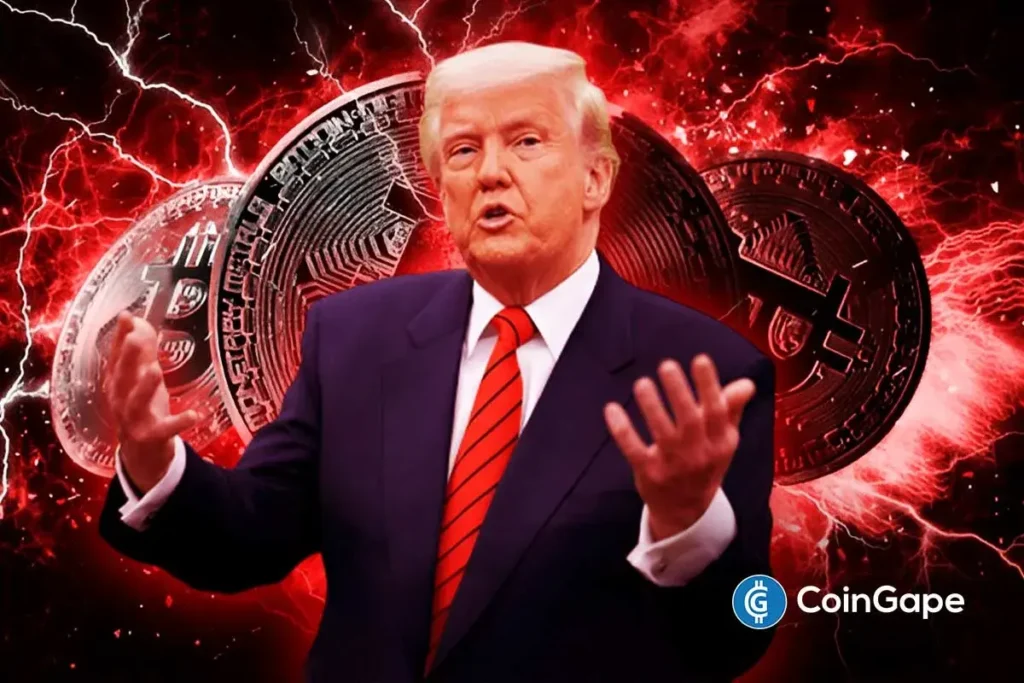Cryptocurrency Market Experiences Turbulence Amid Rising Tariff Threats
The cryptocurrency market has recently encountered significant turbulence, coinciding with U.S. President Donald Trump’s rhetoric surrounding heightened tariffs on international trade. This market response has resulted in a stark decline, notably with a total reduction of nearly $40 billion in the global market capitalization for cryptocurrencies. The August 1 deadline looms closer, but Trump has signaled potential conditions under which tariffs might be lowered, leading to uncertainty in the markets.
Market Overview: Crypto Prices in Decline
Recent data from CoinMarketCap illustrates a pronounced downturn in cryptocurrency values over the past day. Among the ten largest cryptocurrencies, Dogecoin faced the steepest decline, losing 6.61% to settle at $0.24. XRP is also in a vulnerable position, falling nearly 6%. Other notable losers include Solana, which is down 4.75% and now trades at $190, while Cardano has dipped by 5.38% to $0.80. In contrast to the wider market decline, Bitcoin remains relatively stable, only falling 0.55% and continuing to trade above the $118,000 mark. Despite these losses, Binance Coin (BNB) has managed to defy the trend, reaching an all-time high of $809 amid significant institutional accumulation.
The Tariff Threat and Its Economic Impact
The current downturn in the cryptocurrency market can largely be traced back to President Trump’s threats to ramp up tariffs against nations that do not comply with U.S. demands to open their markets. Trump explicitly stated via a post on Truth Social that he plans to impose higher tariffs on countries that do not eliminate trade barriers, thus impacting U.S. companies’ ability to compete globally. However, he has also indicated that tariffs could be lowered for countries that agree to improve trade relations with the U.S., creating a potentially volatile business environment.
Conditions for Lower Tariffs
In his discourse on tariffs, Trump has adopted a "carrot-and-stick" diplomatic approach. He asserts that tariff reductions will only be considered if foreign nations agree to open their markets. For instance, the possibility of a new trade deal with Japan was mentioned as a catalyst for such adjustments. Furthermore, Treasury Secretary Scott Bessent has labeled the August 1 ultimatum as a "hard deadline," further adding to the market’s anxiety. The implication of these tariffs promises to have wide-reaching consequences, potentially upending trade relationships and affecting global commerce.
Inflation Dynamics and Market Sentiment
Amid these trade talks, inflation continues to be a contentious issue. Despite Trump’s assurances of zero inflation linked to his tariffs, June’s Consumer Price Index (CPI) data indicated a rise of 2.7%, refuting claims and signaling a need for vigilance. As the cryptocurrency market reacts to both tariff announcements and inflation fears, investor sentiment remains fragile. The fluctuations observed in leading cryptocurrencies showcase a market that is highly reactive to geopolitical and economic developments.
Broader Market Dynamics and Institutional Interest
Despite the adverse conditions, it is important to note that not all cryptocurrencies are suffering equally. Binance Coin (BNB) is a prime example of resilience amidst the downturn, having achieved new peaks with increased accumulation from institutional investors. This sustained interest highlights the complexities within the crypto market, where specific investments can still thrive even as broader market sentiments shift. The total global cryptocurrency market capitalization is currently pegged at approximately $3.87 trillion, while daily trading volumes have declined by 12% to around $195 billion.
Conclusion: Navigating a Volatile Landscape
As the cryptocurrency landscape continues to grapple with uncertainty stemming from tariff threats and fluctuating economic indicators, investors are urged to proceed with caution. The broader implications of President Trump’s trade declarations cannot be understated, impacting not only the crypto market but also global trade dynamics at large. This evolving narrative mandates that investors remain vigilant and informed, conducting thorough research before making any financial commitments in this volatile environment. The coming weeks will be crucial in determining how these geopolitical tensions will shape the future trajectory of the cryptocurrency market.


